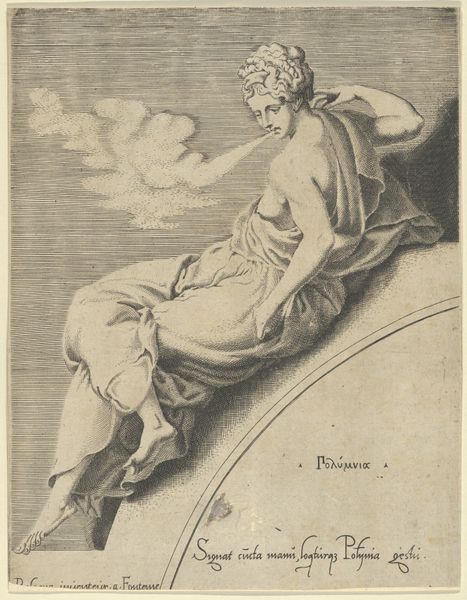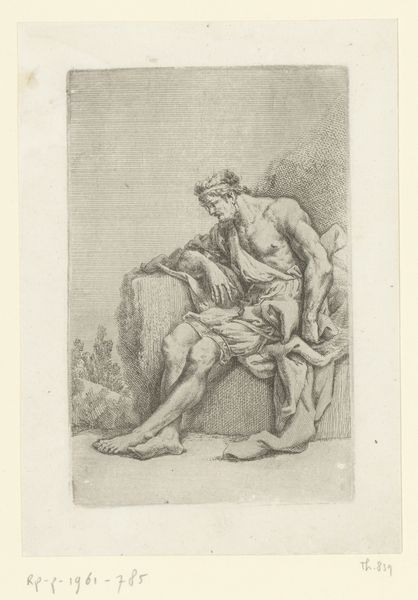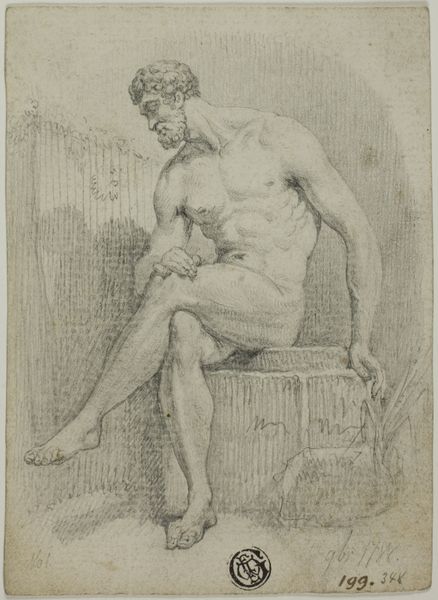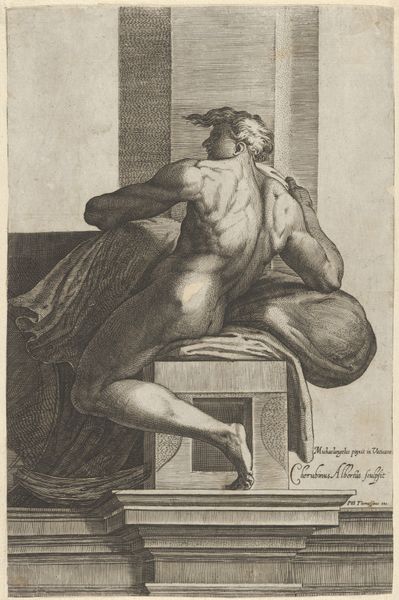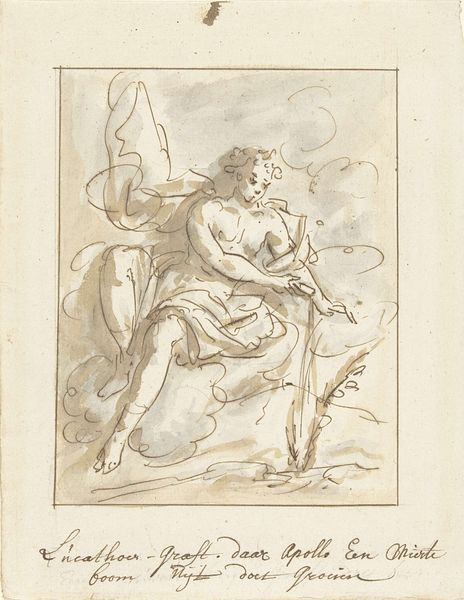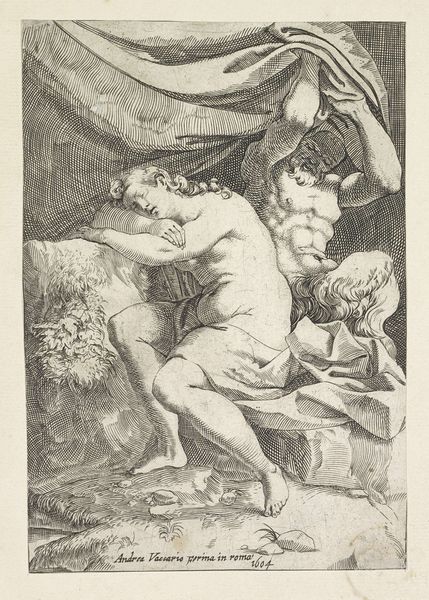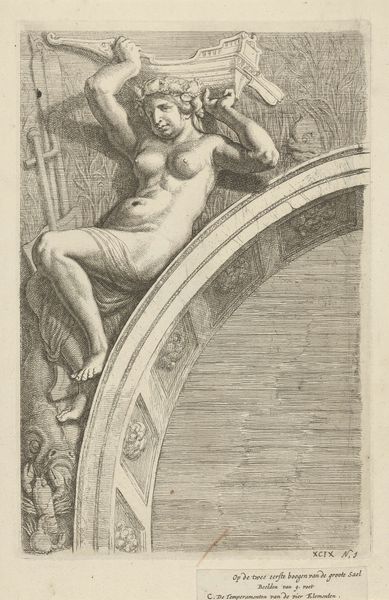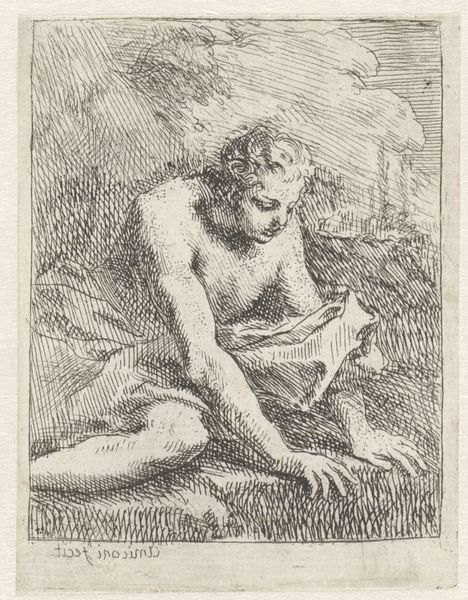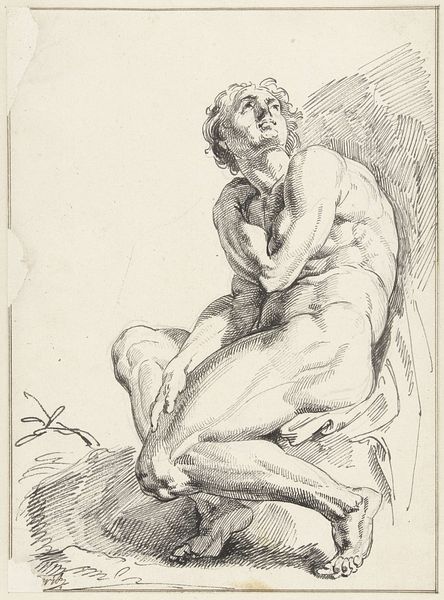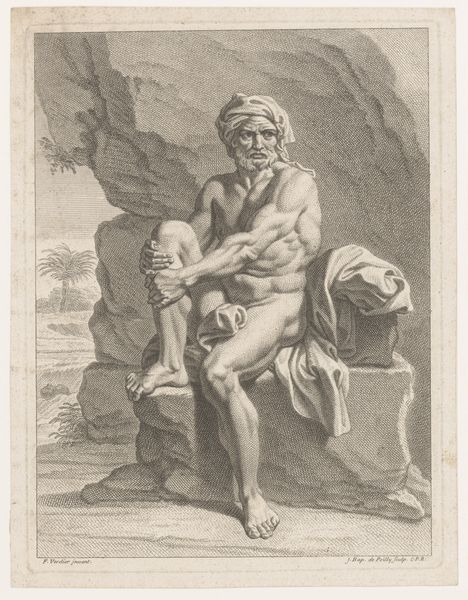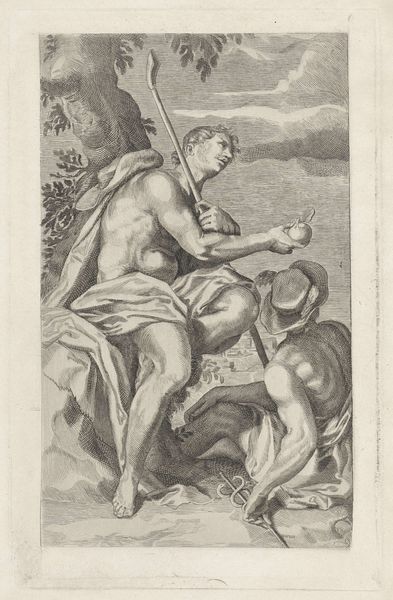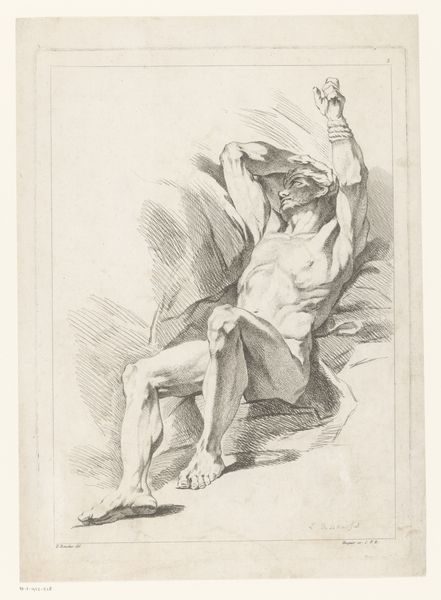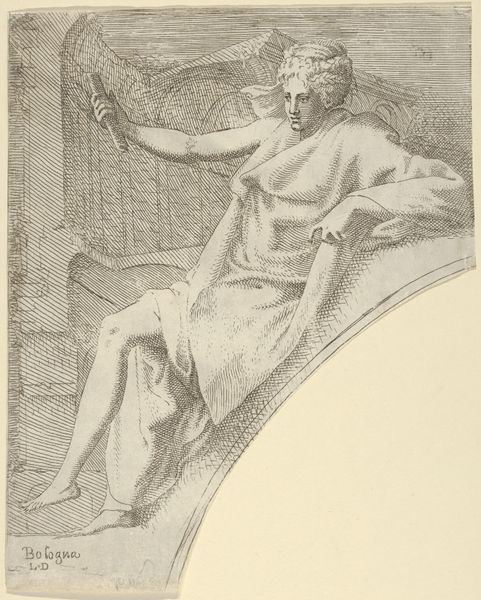
Polyhymnia, from "Twelve Muses and Goddesses" 1535 - 1550
0:00
0:00
drawing, print, engraving
#
drawing
# print
#
11_renaissance
#
nude
#
engraving
Dimensions: Sheet (trimmed): 8 7/8 × 6 3/4 in. (22.6 × 17.1 cm)
Copyright: Public Domain
Curator: The print we're looking at is titled "Polyhymnia, from 'Twelve Muses and Goddesses,'" dating from around 1535 to 1550, and it's attributed to Léon Davent. Editor: She looks kind of… lost? Or contemplative. It's like she’s waiting for something, perched on that improbable arc, gazing into what? Maybe her own potential? It's wistful. Curator: Polyhymnia was, in Greek mythology, the muse of sacred poetry and hymns. What Davent—or perhaps an artist he engraved after—captures here reflects that spirit. She’s positioned as an allegory within a set of twelve prints portraying these classical figures, playing into Renaissance interests in the classical world. Editor: So, this isn't just a pretty picture, it’s supposed to carry meaning. Poetry… hymns. I see it. It's there in the way she holds herself. Not just physical, but a kind of holding within. All the etching gives her is the heavy robe, the bare shoulder; those choices have to communicate. Curator: Precisely. Engravings such as this circulated widely, disseminating imagery and ideas, helping to shape the visual culture of the time. Prints made art accessible in new ways. The artist had to rely on light, shadow, and composition, reproduced mechanically, and sold everywhere. It's an aesthetic democratizing influence. Editor: And something about her… It feels unfinished, raw. Like a sketch you keep coming back to. Maybe it’s the limited detail or the single line. A piece doesn't have to shout. Her expression tells me that she isn't quite complete or defined; still trying to give sacred songs, something timeless and very human, expression. Curator: Absolutely, the quality of the line and form, typical of Renaissance printmaking, serves to draw the viewer closer into a dialogue with classical thought. Editor: Looking closer like this makes me think: inspiration isn't a thunderbolt. Sometimes it is pensive, quiet, needing that pause on a curved road, looking to make expression inevitable. Curator: Yes, the impact of art, like history, is a continuum, and these older works inform modern values in sometimes unexpected ways. Editor: It makes one wonder who and what her equivalents in this era of mass media may be... Let us remember this Polyhymnia as we continue along our journey!
Comments
No comments
Be the first to comment and join the conversation on the ultimate creative platform.
